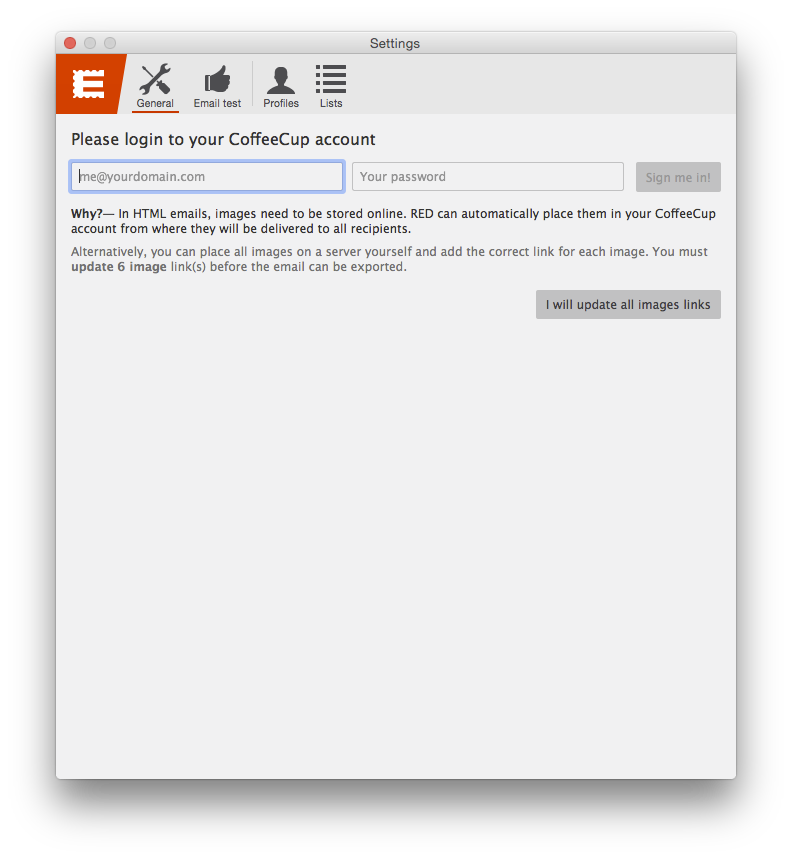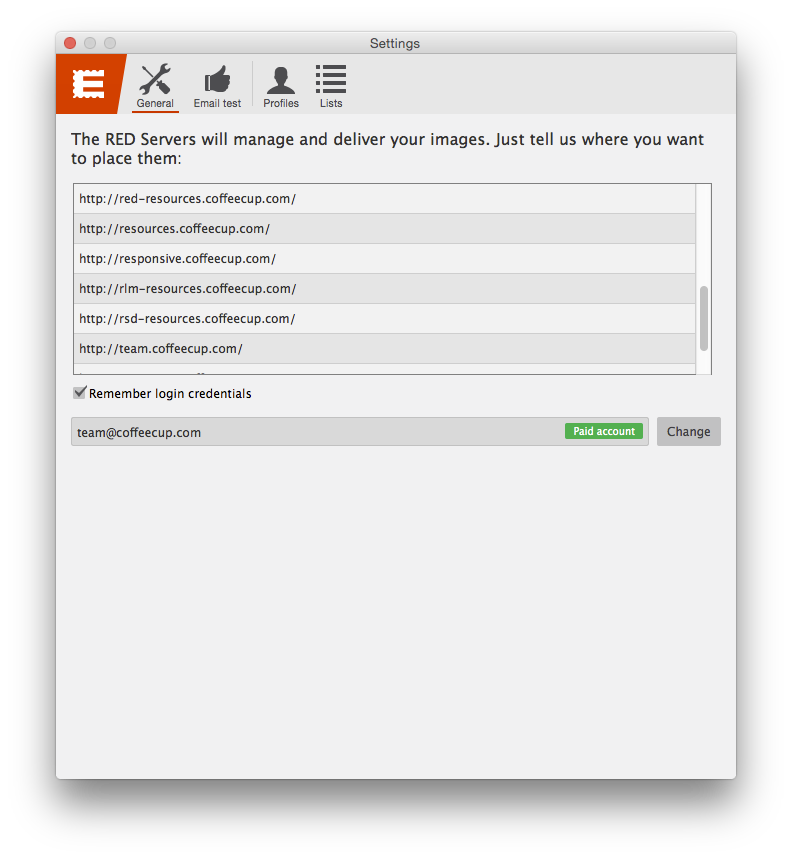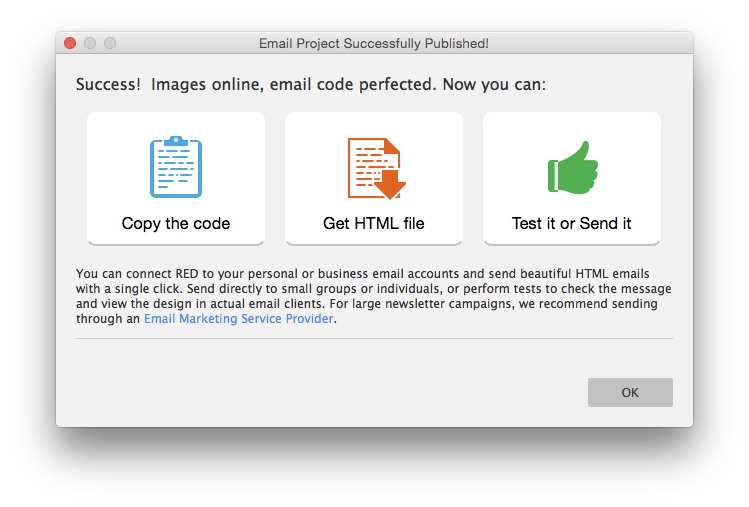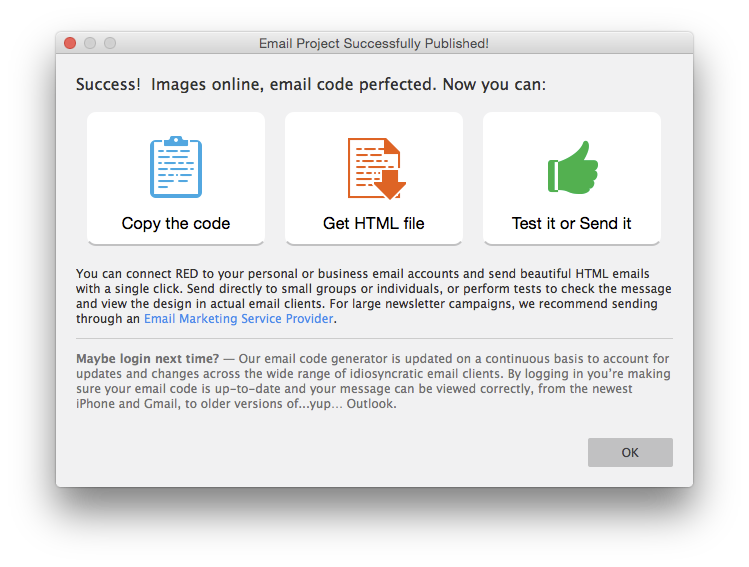There are two ways to generate your email in Responsive Email Designer; to your CoffeeCup account or to your local computer. Depending on your skill sets and needs, one may work better for you than the other.
An important thing to remember when making this decision is all images need to be uploaded to a server for them to appear inside of the email. By using the Resource Library, all images referenced from here will be automatically uploaded to your CoffeeCup account.
If you do not wish to use your CoffeeCup account, the Resource Library cannot be used. Instead, you will need to upload the images manually to your server first and then link to each image using the "Online Image (Paste Link Below)" located under the Design tab. To start the export process, click the Export Toolbar Icon. Here you will then choose if you want to continue using your CoffeeCup account or not.
Export using your CoffeeCup Account - Quick and Easy
Step: 1
This option generates your responsive email to your CoffeeCup account, along with any included local images to allow for quick and easy testing and sending of your responsive email. Simply enter your CoffeeCup username and password and click Sign me in!

Step: 2
Once signed in, you will need to choose the URL where you wish to store the images and then close the Campaign Settings Window.

Step: 3
Click the Export Toolbar Icon, and you will be prompted to select a location on where the exported files will be saved to. The automagical process will then begin, and all images will be uploaded to your CoffeeCup account and a responsive email will be generated.

Copy the Code: This will copy all the HTML code needed for your responsive email to your clipboard. You can then paste this into your email sending services such as MailChimp or Mandril or your email client for delivery.
Get HTML File: Select this option to open the folder to where the HTML file for your responsive email has been generated.
Test it or Send it: Test your responsive email before sending it to your customers. RED will send the email to whatever list option you have chosen under Campaign Settings > Email Test.
Why is using a CoffeeCup account recommended?
By accessing your account, this allows you to easily upload images used in your emails without the hassle of uploading them manually to your website. Also, by using your account, you have access to all the latest scripts and markup that will ensure your emails are always compatible with the ever-changing design standards and email clients released each month.
Export to your local computer
Using this option does not interact with your CoffeeCup Account (and you loose out on all the automagical stuff). As long as you have not linked any images through the Resource Library, you can export without having to upload to your CoffeeCup account. To upload your images to your server you would need to use an FTP program such as Direct FTP.
Step: 1
To start this process, you just need to click on Export Toolbar Icon and then click the button Continue without updates.

Step: 2
Responsive Email Designer will check to make sure that the project does not have any local images (including background images). Once all images have been linked, you will be prompted to save and then allowed to export. This will then generate your responsive email.

Copy the Code: This will copy all the HTML code needed for your responsive email to your clipboard. You can then paste this into your email sending services such as MailChimp or Mandril or your email client for delivery.
Get HTML File: Select this option to open the folder to where the HTML file for your responsive email has been generated.
Test it or Send it: Test your responsive email before sending it to your customers. RED will send the email to whatever list option you have chosen under Campaign Settings > Email Test.
Placeholder Images
If you are using any placeholder images, you will need to supply a Online Image URL for each of these used within the project. These images will be included in the count of local images when exporting your responsive email.

